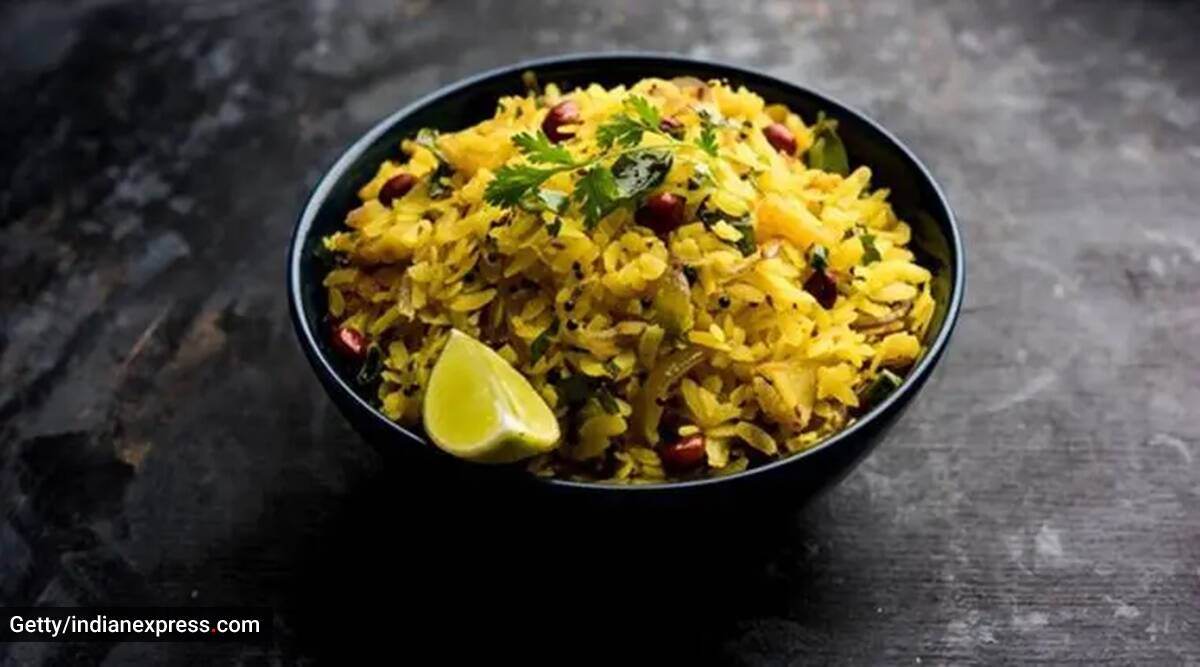 Poha is the best breakfast food because it packs approximately 70 per cent of healthy carbohydrates and 30 per cent fat. (Source: Getty images)
Poha is the best breakfast food because it packs approximately 70 per cent of healthy carbohydrates and 30 per cent fat. (Source: Getty images)Given our early morning rush and the need to have a power-packed breakfast that can be prepared quickly, poha or flattened rice is emerging as the best bet, particularly for diabetics. Blood sugar friendly, lactose-free, gluten-free, heart healthy, fat-free, poha ticks off all the right boxes.
How Poha scores over idli
Poha is the best breakfast food because it packs approximately 70 per cent of healthy carbohydrates and 30 per cent fat. “Its fibre content allows the sugar to be released slowly and steadily into the bloodstream, instead of causing an unexpected jump, thereby avoiding sudden spikes. That’s why if you want to fuel up for your day fast, poha does a better job rather than rice, idli or dosa. Besides, you get a healthy dose of carbs without bothering about the heaviness and sluggishness which other rice products can induce,” says Debjani Banerjee, Incharge Dietetics, PSRI Hospital, New Delhi.
Both are probiotics and are rich in B vitamins. “But poha has a high iron and calcium content when compared to white rice. Also, it has a much lower glycaemic index than white rice. Generally rice is low in fibre,high in carbohydrates with minimal amount of protein. And a lot of sugar build-up happens on how you cook rice and the type you choose. Rice is parboiled before flattening and hence it can be consumed with very little to no cooking,” adds Banerjee.
You can add other nutrients and ingredients
“Since it’s cooked along with a number of vegetables, like peas, cauliflower, beans, carrot, coriander and even crunchy peanuts, your plate becomes more nutritious and filling. It’s a flexible meal option and packs in a nutritious punch,” says Banerjee.
Sits easy on the stomach
Poha is very light on the stomach and can be easily digested. Therefore, it can either be had as the first morning meal or as a light evening meal. “Poha will never cause bloating and keep you full for longer. It’s also quite low in calories. One bowl of cooked vegetable poha has just around 250 calories, along with a number of essential vitamins, minerals and antioxidants. Due to the presence of curry leaves, the poha becomes heart-healthy,” advises Banerjee. If you add some peanuts to the mix, they can raise the number of calories in the meal and be a good source of antioxidants and protein. So, if you’re overweight, you may want to skip them.
Good probiotic, good dose for holistic health
Poha is considered to be a probiotic. As it undergoes fermentation, it retains good bacteria and boosts gut health. “Its high iron content makes it a good supplementary snack for those living with iron deficiency,” says Banerjee.
Desi and red poha are rich in essential minerals like zinc, iron and potassium, which are essential pre-requisites for holistic health. Zinc helps in immunity and metabolism, iron is necessary for growth and potassium benefits the fluid balance.
Can be had in a variety of ways
Poha is a versatile dish and can be served in many forms. By adding nuts, vegetables, pulses, green peas, it is a quick bowl in a meal. Also squeeze some lime juice over it as it is rich in vitamin C that helps in the absorption of iron. Sometimes, it is topped with jaggery and coconut shavings or simply pan roasted.
In many parts of India, particularly in the eastern part of the country, poha is soaked in water and then mixed with curd to calm the stomach. It is fuss-free and safe.